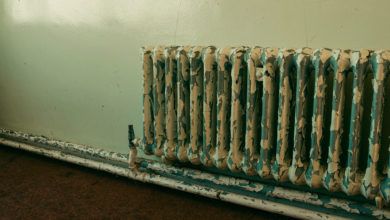We live in a world of possibilities due to the massive impact of technology. Your heating system is a good example of how technology has evolved. Within the confines of your home, you don’t have to put on those large sweaters and other bulky clothes to keep warm during winter. Your heating system takes care of all the heat you need within this extremely cold period. But some form of regulation is required to ensure this important tool works at an optimum level. The thermostat provides the needed control. It allows you decide when the heating system comes on and when it goes off. All of these work using the temperature of the air in your home. The thermostat can also be used to coordinate the actions of your air conditioner as well.
When our heating or cooling system isn’t working, we don’t even give the thermostat a ‘second stare’. The assumption is the heater or air conditioner is the guilty gadget. This isn’t always true. Your thermostat could be faulty and might be responsible for the irregular heat delivered from your furnace. To many, knowing when to replace this highly beneficial accessory might seem like a complex puzzle. This shouldn’t be the case. In this piece, we will look at ways you can tell when your thermostat needs replacing.
Before you go into identifying the signs of a flawed thermostat, you have to understand how this miniature device works. A thermostat can belong to any of two categories:
Electromagnetic thermostat
This is the clearly the more primitive class of thermostat. It usually consists of two metallic strips which will either constrict or expand depending on the temperature of the surrounding area. The resulting action will prompt the thermostat to either switch on/off your heating or cooling system.
Electronic thermostat
Most homes with a heating system utilize this type of thermostat. It is portable, user-friendly, and versatile. It gives you more control compared to what’s obtainable with the electromagnetic thermostat. The only significant drawback is this class of thermostat is more expensive.
With the two categories of thermostats outlined, it becomes imperative to take a look at some of the signs of a faulty thermostat.
How do you identify a flawed thermostat?
Below are some of the possible signs:
A Nonresponsive heating and cooling system:
If your thermostat is connected to both your heating and cooling system, you might experience some difficulty starting both. This is perhaps one of the most discernible signs that your thermostat is not working efficiently. Some homeowners just conclude their heating system or air conditioning is faulty. This could be true but not always. Your thermostat could be the source of the problem.
Sometimes, repeatedly tapping the device might appear to do the trick. But how long will you continue to do this? Frankly, it is advisable you seek the input of a professional before deciding on your next line of action.
Inconclusive heating or cooling:
Perhaps your HVAC (Heating Ventilation Air Condition) system turns on normally without any problems but stops midway through the heating or cooling process. This could be a sign of a faulty thermostat. However, it’s not a definite sign since both your air conditioning and the heating system might be responsible for this perceived inefficiency.
This problem can be rectified by taking a proper look at the thermostat. You could come across something amiss within the temperature-sensitive device. If necessary, seek the input of a professional to safeguard your health and to avoid complicating the situation.
Those custom settings don’t work:
One of the benefits of the electronic thermostat is its programmable nature. You can chip in your preferences into your electronic thermostats. Usually, when such is done, your heating and air conditioning will adhere to the defined settings entered on your thermostat. However, if the settings configured on the device have refused to take effect on your HVAC system, then something is not right with the thermostat.
A blank screen:
This is another obvious sign of a faulty thermostat. For instance, your computer’s monitor goes blank without you doing anything; what do you think? Definitely, you will feel something is wrong with the computer. This is also applicable to the screen of your thermostat. It shouldn’t go blank and if it does, something is wrong. To salvage the situation, you might have to check the batteries. If the batteries are dead, replace them. However, if the batteries still look okay, perhaps a factory reset could help. If that doesn’t work as well, consider replacing the thermostat or getting a professional to have a look at it.
Positional error:
Sometimes your thermostat is actually in perfect condition but its position in your home is the problem. In the absence of a thorough visibility study, you might place this highly sensitive device in the path of the sun or exposed to the cold weather from a flawed window. The result is an awkward performance by the thermostat.
This can be dealt with by changing the location of the thermostat. Depending on the type of thermostat in your possession, you might need to engage the services of a professional though you can consider a do-it-yourself approach. This, however, depends on how well-informed you’re on the subject.
A dirty thermostat:
Yes, you read that right; a dirty thermostat could be responsible for your HVAC system’s no-show. Negligence of the physical condition of this temperature-sensitive device can be its undoing. We are all guilty of touching our thermostat with our ‘filthy hands’ and such comes with grave consequences. One distinct repercussion is this leaves the device in a mess which affects its sensitivity. However, applicable to all things dirty, regular cleaning of the thermostat should help in restoring it to its optimum state.
Conclusion
Forget the size, the thermostat can affect your mood and how convenient you’re in your home. If this miniature accessory is faulty, don’t expect it perform at an optimum level. Paying rapt attention to your thermostat can save you money you would otherwise spend on repairing your heating or cooling system.





